How Long To Keep Cone On Cat After Spay – Litter-Boxes.com
Neutering is a standard but frustrating procedure for most cats and their owners. for example, post-operative head cone is not an experience enjoyed by either the owner or the cat. often leads parents to wonder when they can remove these gadgets from their cat’s head. we did some important research on the topic and found an answer to bring you some relief.
Cat owners can expect their cats to wear a cone for 10 to 14 days post-op. but this length of time depends solely on whether your cat’s stitches or wound have fully healed. if not, the cone should remain on until fully recovered.
Of course, this answer is a bit vague. so our next sections will delve into this topic and a few others to offer a better understanding of what homeowners can expect. soon you will have everything you need to get through this experience without any problem.
Disclosure: We may receive commissions for purchases made through links in this post.
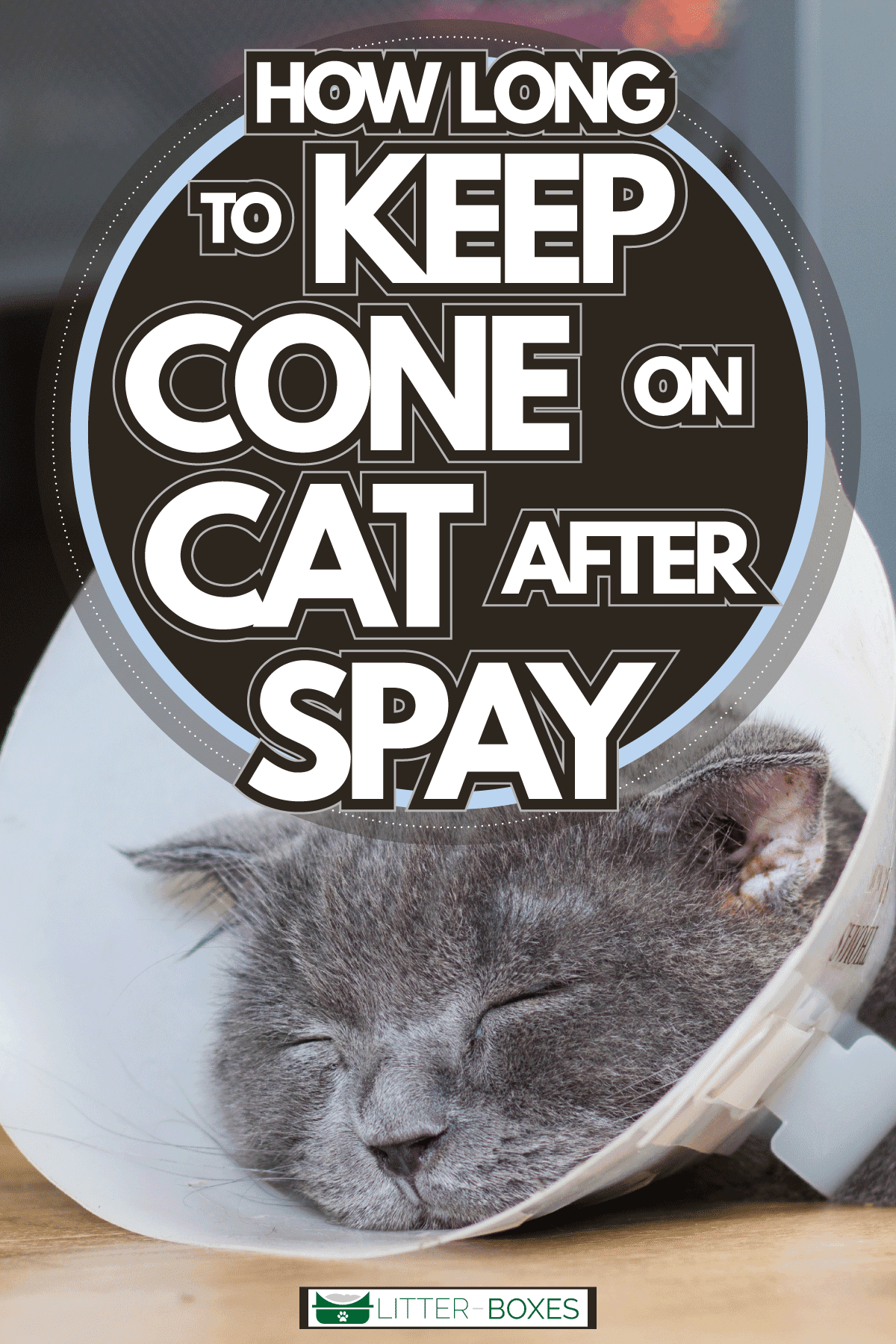
how do you know when to remove the cone?
There’s a bit of science to knowing when to completely remove the cone after neutering a cat. as we noted above, it will happen in 10-14 days. but there are signs owners should be aware of when considering removing their cat’s cone:
- There is no redness or discharge from the incision.
- your cat’s wound does not require sutures or staples to hold it together.
- no tenderness or swelling near or over the incision area.
- any swelling, discharge, bad odors, or excessive redness of the skin
- leakage of blood continued beyond the initial 24-hour period
- constant blood seeping or dripping from the incision
- Banging head against walls and furniture to remove it.
- pretending they can’t eat or drink with it on.
- hanging their heads as if embarrassed by the cone.
- trying to shake it off.
but owners should wait to remove it until a post-op exam with their vet. It will need to be done 7-10 days after the initial surgery to make sure everything is okay. after all, it’s always best to consult a professional when it comes to your cat’s health and safety.
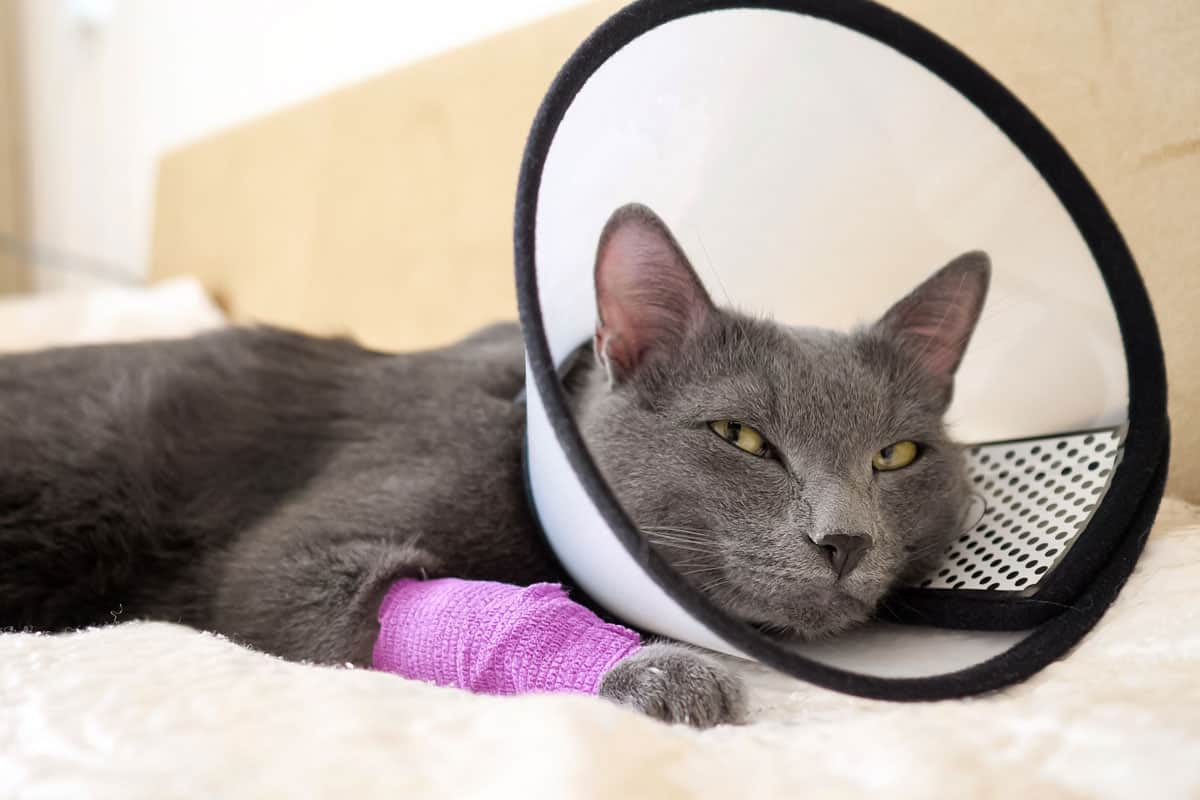
what should the incision look like?
Cat owners should monitor the incision every day. it is crucial to prevent any problem or infection from affecting the wound. in other words, parents will need to understand what a proper incision looks like on their cats.
A proper incision will be clean, with the edges touching each other. in addition, the skin usually has a slightly reddish or pinkish color around it. owners should not be alarmed if the incision area is slightly redder for the first few days.
If your cat’s skin is pale, bruising is usually seen around the incision area. you may not notice this bruising until a couple of days after the spay operation. it may even seem a bit excessive compared to the size of the incision.
This bruise is caused by blood seeping under the edges of the skin. it is one of the few cases that can seem a bit worrying. however, it is completely typical for a cat’s incision area to experience this phenomenon.
At first, some cats may experience some blood seepage from a recent incision. this problem usually occurs in more active cats during the first 24 hours.
When should you worry?
So the next question most homeowners ask is, what are the worrisome signs? If you see any of these problems appear at the incision site, it’s time to visit the vet:
what to do if your cat won’t keep the cone on?
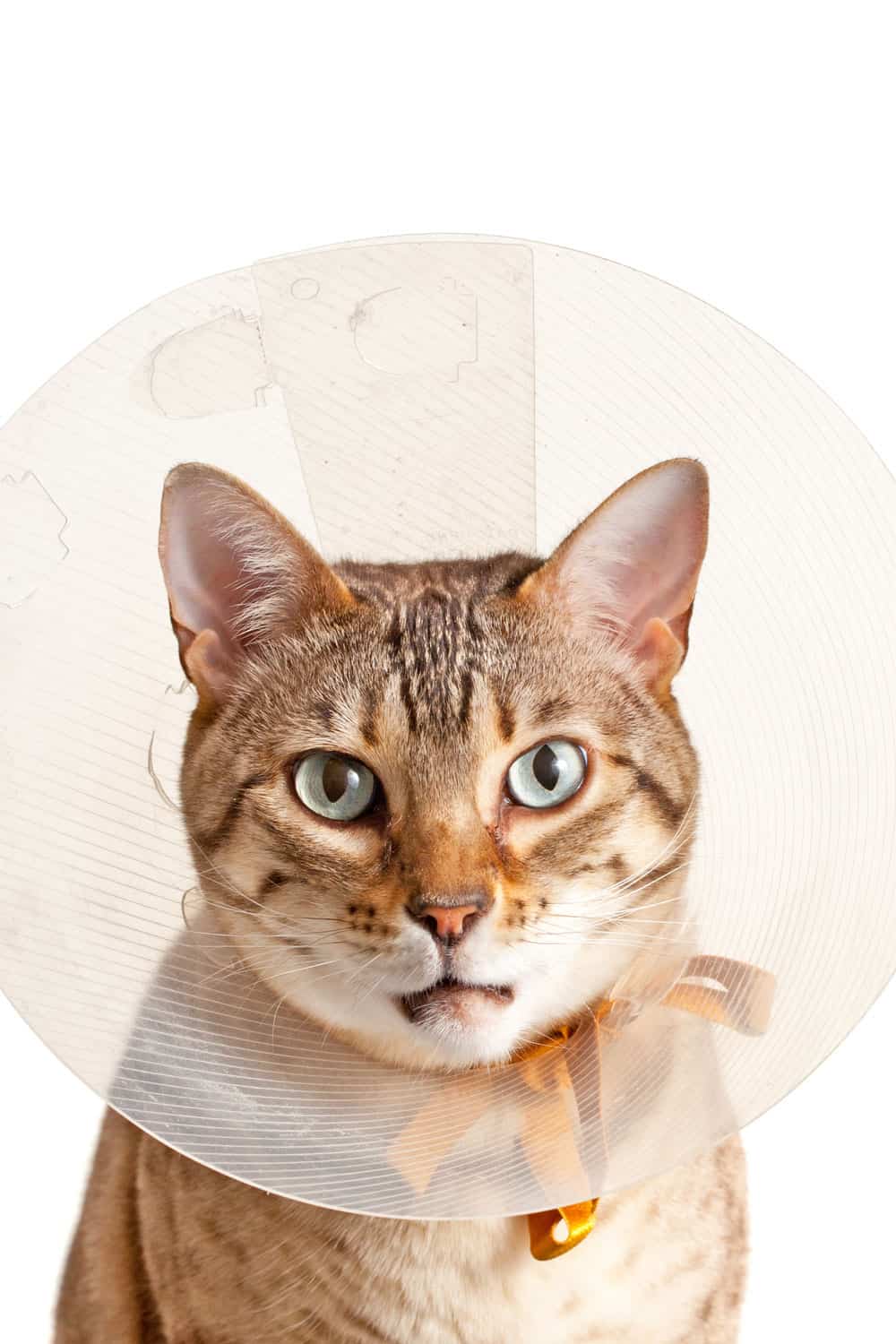
Most cats will not like wearing cones around their heads. as a result, these felines will look for any opportunity to escape these security contraptions. It’s shocking to see the lengths a cat will go to when he tries to escape these cones.
but we must do everything we can to prevent them from succeeding. so here are some tips to keep the cone in your head instead of becoming a victim of his houdini antics:
consider the size of the cone
one of the first preventative measures to consider is to check the size of the cone. these cones are much easier to escape when they don’t fit correctly. most experts recommend ensuring enough space for one or two fingers between a cone and the cat’s body.
The cone should also extend past your cat’s nose. otherwise, it will not prevent removal.
place the cone on your cat’s collar
If you need additional security, one option is to attach the cone to your cat’s collar. it will make the cone much harder for them to remove when they are feeling frisky. but you’ll need to make sure your cat doesn’t get stuck with the cone still attached to the collar.
buy a different cone
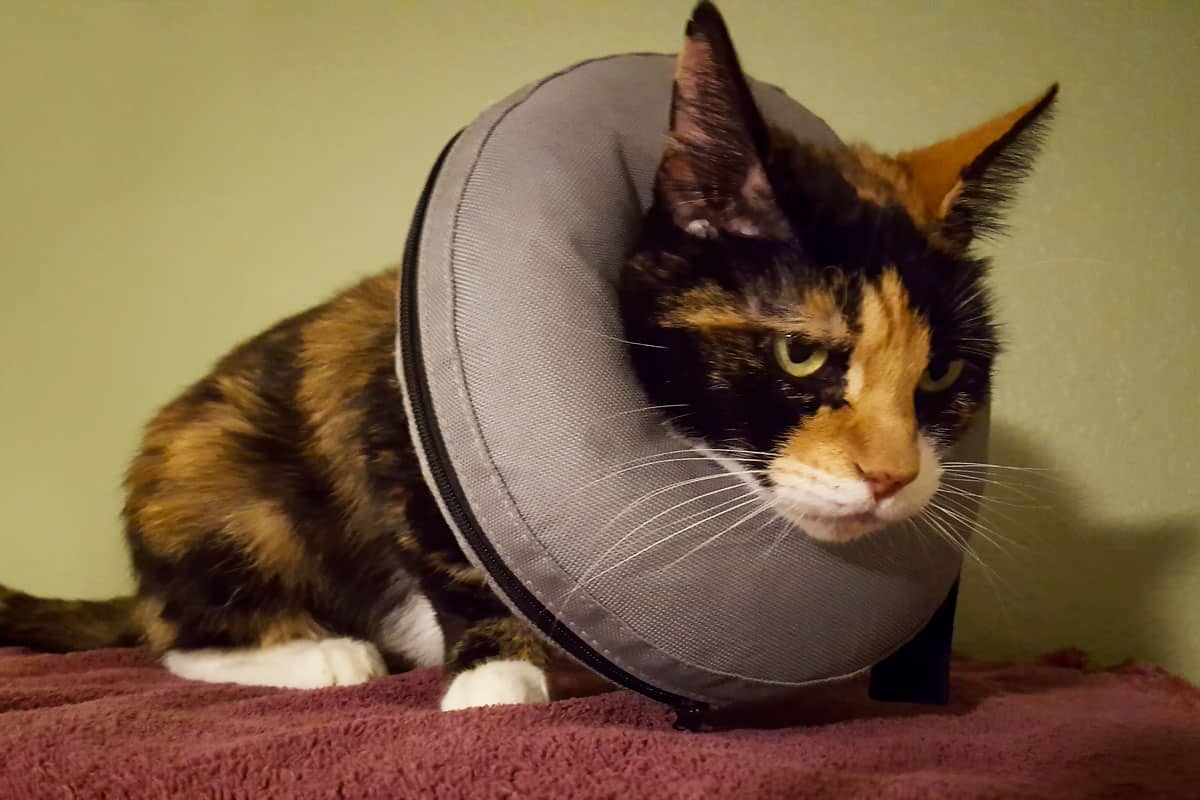
These post-op cones come in a variety of types. so if one doesn’t work, there are plenty of other options to select from. it’s just a matter of figuring out which one best suits your cat’s unique needs and preferences.
Is it safe to leave a cat alone with a cone?
We do not recommend leaving your cat alone when using their cones. however, it does not mean removing the cone by leaving them alone. instead, prepare the room around you if you need to go.
Placing them in a large, open room with almost nothing around them is the safest bet. this will prevent them from getting their heads stuck or knocking over things. meanwhile, remember to place food and water bowls inside the space.
but make sure they can eat and drink from the cone. in other words, it’s something cat parents should watch them do before leaving them alone. then you should keep the time away from your cat as limited as possible.
Another consideration is removing the lid of a covered litter box. Your cat will be trapped inside these enclosures when wearing a post-op cone. therefore, it is ideal to use an uncovered litter box during this process.
If possible, call a friend or family member to help you. It’s always best to try all alternatives before leaving your cat unattended with their cone attached. Supervision is a crucial component in creating a successful and safe cone experience.
should you leave the cone on your cat at night?
Many people worry about keeping the cone on their cats at night. it’s not hard not to see why, as it seems a bit unsafe. however, keeping the cone on at all times is the only way to ensure its effectiveness.
Cats will have no problem sleeping, drinking, peeing, pooping or eating with their cones. owners who are strict about the use of the cones help cats get used to it faster. therefore keeping it on at night becomes necessary for a successful cone experience.
More importantly, a cat without the cone will start to play with your incision. it will cause them to start licking the area and disrupt their healing process. therefore, it is best to keep the cone on at all times until your vet confirms that the wound is fully healed.
Do cones depress cats?
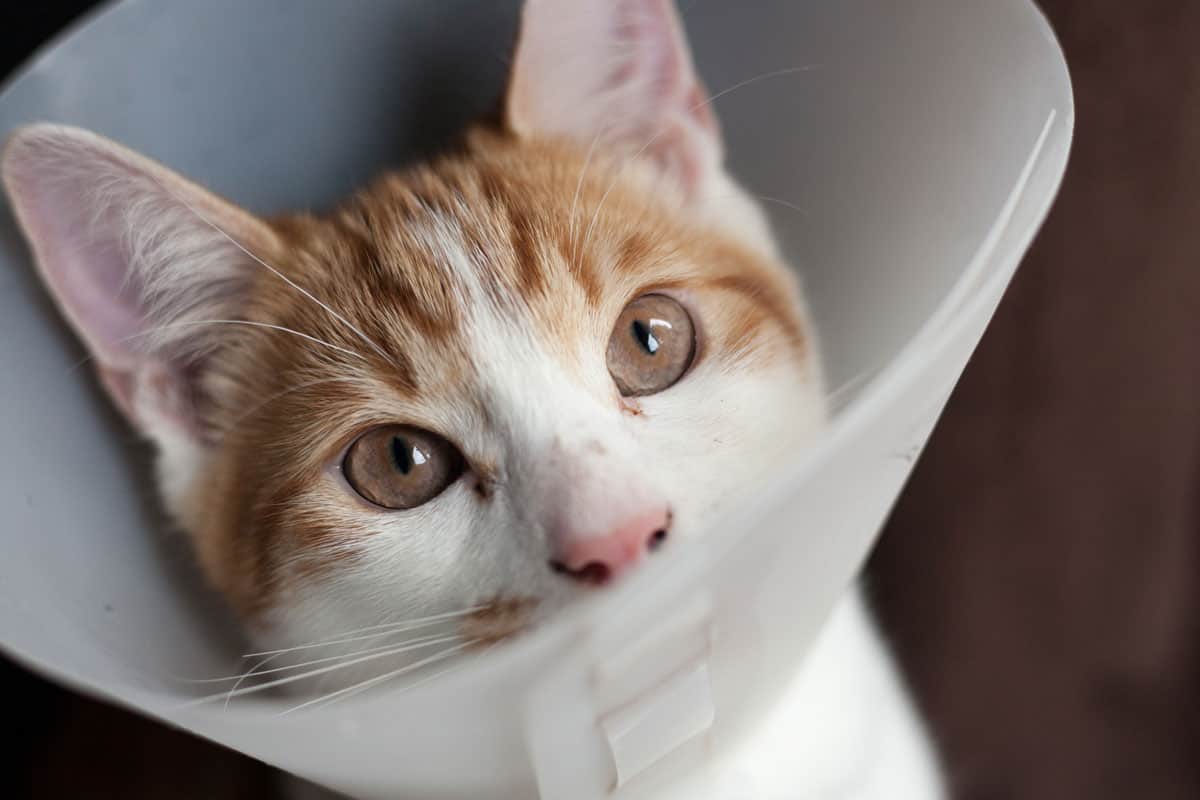
Your cat may become depressed when wearing a post-op cone. If this happens, there are some signs that your cat is feeling a little sad:
but the best thing a homeowner can do is not worry too much about these signs. instead, do your best to comfort them with love and hugs during this challenging experience. your cat should get more used to the cone after a few days.
to close
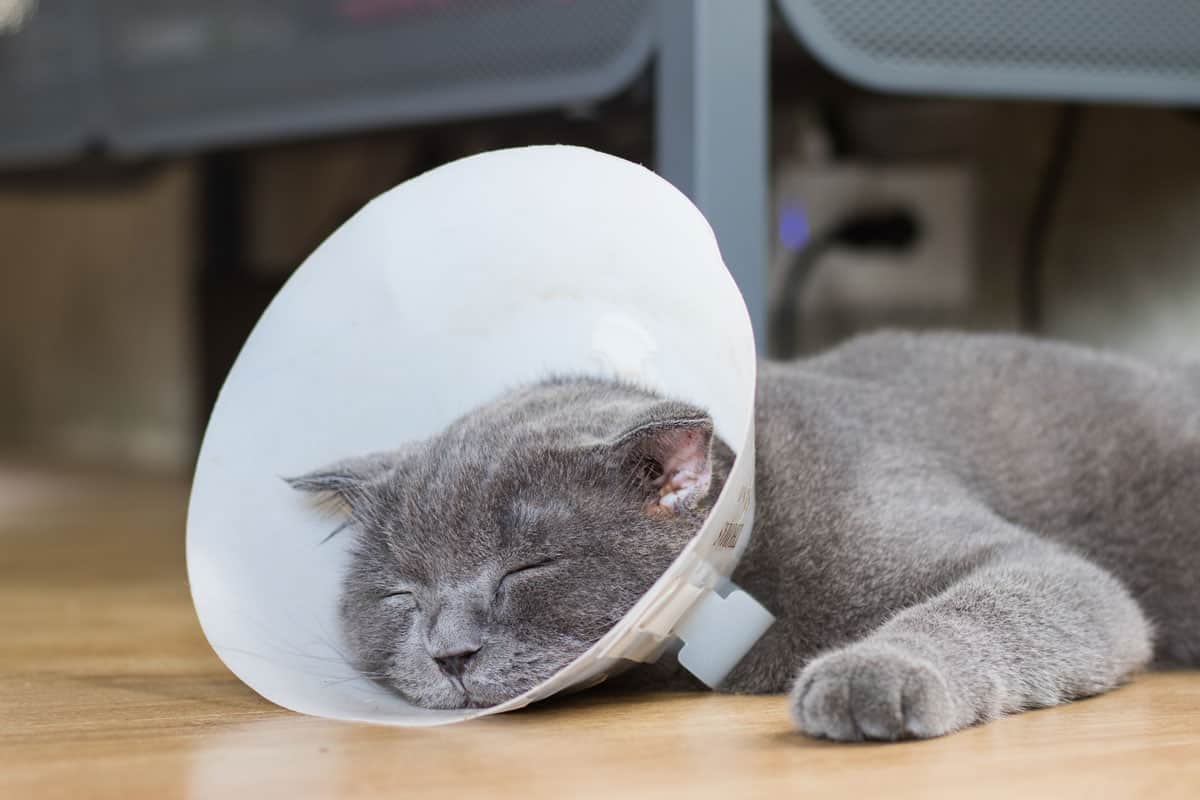
Your cat should wear her cone 10-14 days after the spay procedure. it is a necessary safety precaution to prevent infection and other problems. if a cat runs out of a cone after this procedure, she’s just asking for trouble.
Don’t forget to post and share your experiences with cats wearing cones. we’d love to hear all the funny anecdotes and anything else you’d like to share. Thanks for reading!
If you have time, check out the following helpful articles:
how long to quarantine a sick cat with uri
where can you hide the litter box (and should you)?